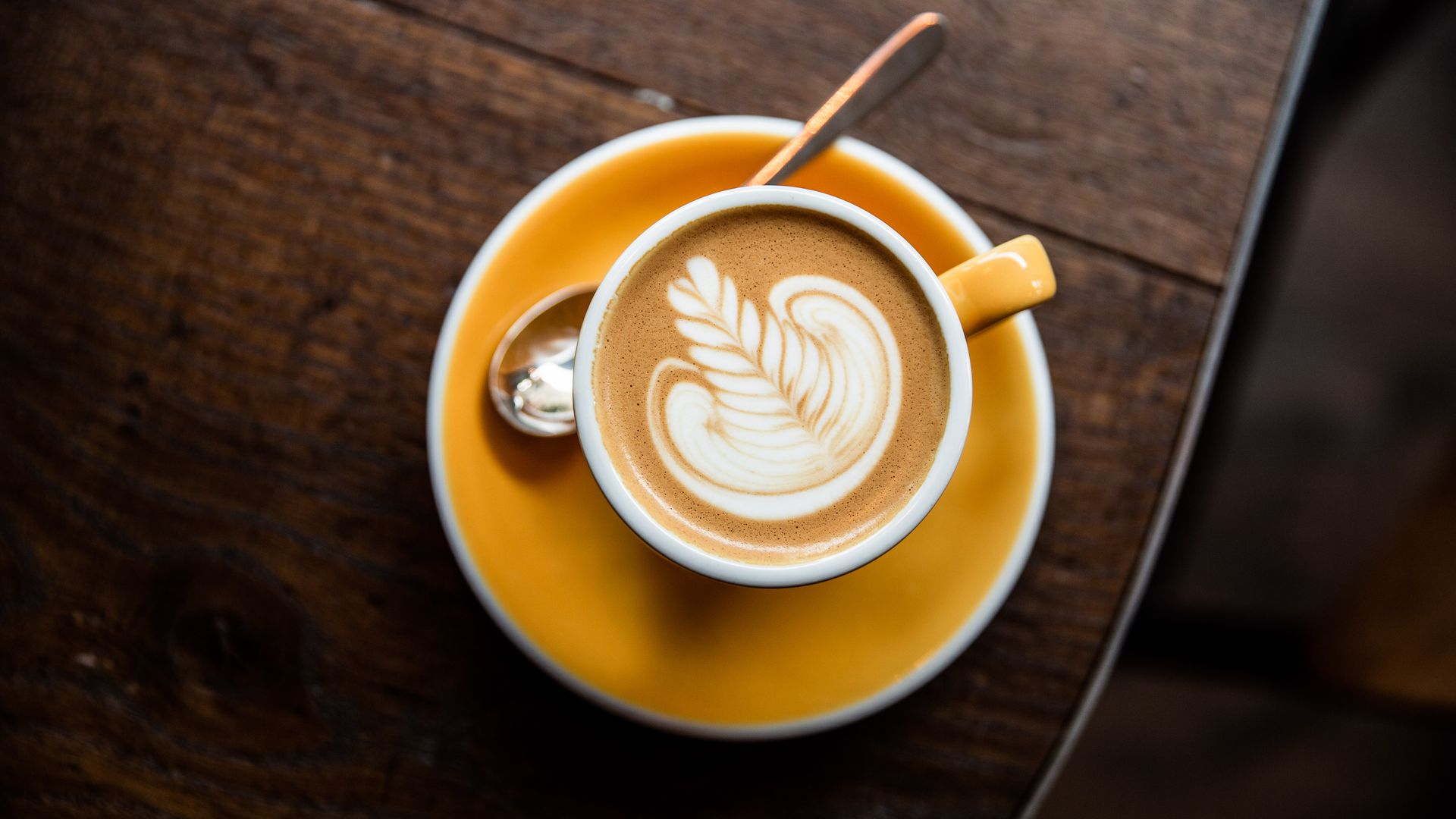
THE PRICE OF YOUR FANCY COFFEE DRINK JUST WENT UP, AGAIN
The average cost for a cup of coffee is somewhere around $6 to $7 after add-ins, tax, and tip. A basic spot like Blank Coffee, the well-regarded Variety, and longtime favorite Abraço now charge around $4.50 to $5.50 for a baseline hot espresso-based drink; some new spots are charging higher prices, more like $6 or $6.50 for a latte.
While the price hikes aren’t new, another round for 2024 is apparently “inevitable,” according to the point-of-sale Toast report on the state of coffee. Sure enough, across multiple locations of the Brooklyn-based Variety Coffee, co-owner Gavin Compton says his shops just raised prices on coffee drinks in response to rises in the cost of doing business. La Cabra’s general manager, Ian Walla confirms that their shops have raised prices this year, too. These coffee price hikes, somewhere between a quarter and a dollar, is due to several factors — from beans to the actual cups.
The price of beans is in flux
The price of beans, from harvest to shops, has increased, with the cost of farm labor having ticked up for some of the fancier beans, “as it should,” says Compton. And while climate change may play a role, some buyers are shifting from, say, Guatemala to Mexico for beans, an expansion of regions that we’re also seeing with wine. That flexibility gives some wiggle room to prices — for now.
The price of commodity arabica coffee has jumped more than 40 percent since before the pandemic, the Washington Post reported in November, “climbing even further last year and dropping slightly this year.” Specialty beans — the ones sourced for our specialty coffee shops that come from more diverse growing regions — cost even more. “We want to make sure we’re paying people fairly,” says Walla.
Labor costs have gone up
The cost of minimum wage went up for New York City to $16 an hour in January, which some blame for resulting price hikes. But many shops note that due to the post-pandemic labor shortage, they have long paid more than minimum wage to retain employees. “People should be getting paid more,” says Compton. “Making peace with higher labor costs is worth it, as happy, well-paid employees have much more incentive to stick around,” reads the Toast report.
Paper goods and insurance has increased
The price of insurance has risen, says Compton, which, paired with the rise in the cost of paper goods, can put pressure on businesses; turns out, for some shops, there are fewer places around New York to source paper cups than two years ago, which has pushed up the price of their most essential paper product.
Some landlords are making up for lost time
When it comes to retail, some landlords are making up for losses during the pandemic while customers are willing to spend: Stores are opening, and demand for spaces is high. Rent for Variety’s original location in Williamsburg’s Graham Avenue has tripled since 2008, says Compton.
Stretches of Manhattan’s most expensive corridors may have coffee prices to match, though places like the new London-based WatchHouse Coffee, that opened on Fifth Avenue in April, stays in the $4 to $8.50 range for the more standard offerings. “The surprising thing when it comes to pricing is that customers expect us to be more expensive for what they get when they’re tasting some of the world’s most exclusive and rarest coffees at very reasonable price,” says founder, Roland Horne.
The market can bear it
More expensive coffee isn’t putting a dent in people coffee shop habits: The market can bear it. And the number of coffee shops is growing, with Toast’s coffee shop industry trend report for 2024 noting that two years ago, coffee chains had begun to expand their footprint, despite the effects of the pandemic and staff shortages.
There are now nearly three percent more coffee shops in the U.S. than there were pre-pandemic. While places like Starbucks and Dunkin’ “still have significant market share in the U.S. coffee market,” independent cafes “continue to open and become cornerstones of their communities.”
The report notes that 60 percent of Americans drink coffee every day while 37 percent of coffee drinkers buy coffee outside the home at least four times a week, which, in a city where people don’t cook at home and ovens are used for shoe storage, is likely higher in New York than around the U.S.
“People will pay more than they would a couple of years ago,” says Compton of people’s coffee spending. “The specialty market is a larger market and it’s become more of a thing.”
He notes that his bestselling coffee drink is “latte all day,” and that sales from last year to this one remain the same. At La Cabra, business is up.
“We’re definitely busier than last year,” says Walla.
2024-05-09T21:00:59Z dg43tfdfdgfd